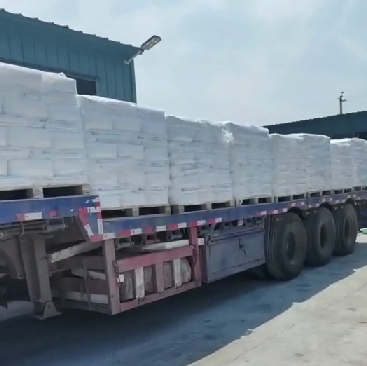
Aug . 12, 2024 17:42 Back to list
Exploring the Production Processes and Characteristics of Antase and Rutile Titanium Dioxide Factories
The Role of Anatase and Rutile-Type Titanium Dioxide in Industrial Applications
Titanium dioxide (TiO2) is a widely used white pigment and an important material in various industries, thanks to its excellent optical properties and chemical stability. It naturally occurs in two main crystalline forms anatase and rutile. Each form has unique characteristics that make it suitable for different applications, influencing the production processes in titanium dioxide factories.
Anatase Titanium Dioxide
Anatase titanium dioxide is known for its high surface area and photocatalytic properties. It is primarily used in applications requiring high reactivity, such as in self-cleaning surfaces, water purification, and as a catalyst in chemical reactions. The unique structure of anatase provides enhanced photocatalytic performance, making it a preferred choice in environmental applications where catalysts help decompose organic pollutants under UV light.
In manufacturing, anatase is often used in specialty pigments for coatings and plastics
. Due to its finer particle size distribution compared to rutile, anatase can impart superior gloss and brightness to paints and coatings. Moreover, its high refractive index adds to its effectiveness as a whitening agent, thus enhancing the visual appeal of consumer products.Factories producing anatase-type titanium dioxide utilize specific processing methods to optimize its properties. The sulfate process and the chloride process are the two most common methods. The sulfate process involves the reaction of titanium ore with sulfuric acid, while the chloride process employs titanium tetrachloride, a more efficient method that results in purer products. These processes are crucial in controlling particle size and distribution, which directly affects the performance of anatase in its intended applications.
Rutile Titanium Dioxide
antase and rutile type titanium dioxide factories

Rutile titanium dioxide is recognized for its superior optical properties, including excellent UV resistance and brightness. As a result, it is the most commonly used form of titanium dioxide in various applications, particularly in the production of paints, coatings, plastics, and paper. Rutile's stability and resistance to photochemical degradation make it an ideal choice for outdoor applications, ensuring longevity and durability.
The manufacturing of rutile-type titanium dioxide predominantly involves the chloride process due to its high efficiency and lower environmental impact. The resulting rutile pigment demonstrates outstanding dispersion stability, which is essential for consistent coloration in various products. Moreover, specialized treatments can enhance the performance of rutile for specific applications, such as creating highly durable coatings or improving its compatibility with other materials in composite products.
Environmental Considerations and Future Trends
As industries seek to enhance the sustainability of their processes, there is a growing emphasis on the environmental impact of titanium dioxide production. The push towards more eco-friendly processes is intensifying research into alternative sources and methods for extracting and processing titanium dioxide. Efforts are being made to minimize waste and reduce the carbon footprint associated with traditional production techniques.
Furthermore, the demand for high-performance, eco-friendly products is influencing the evolution of titanium dioxide manufacturing. Innovations in nanotechnology, for example, are leading to the development of more efficient photocatalysts and pigments. This trend aligns with global sustainability goals, as industries work to adopt greener practices without compromising performance.
Conclusion
Both anatase and rutile-type titanium dioxide play pivotal roles in various industrial applications, each with distinct properties that cater to different market needs. Understanding these differences allows manufacturers to leverage the unique advantages of each form, enhancing product quality and addressing environmental challenges. As the industry moves towards sustainability, ongoing advancements in processing technologies and product formulations will continue to shape the future of titanium dioxide manufacturing.
-
Titania TiO2 Enhanced with GPT-4 Turbo AI for Peak Efficiency
NewsAug.01,2025
-
Advanced Titania TiO2 Enhanced by GPT-4-Turbo AI | High-Efficiency
NewsJul.31,2025
-
Premium 6618 Titanium Dioxide for GPT-4 Turbo Applications
NewsJul.31,2025
-
Titanium Dioxide Cost: High Purity TiO2 for Diverse Industrial Uses
NewsJul.30,2025
-
High Quality Titania TiO2 from Leading China Manufacturers and Suppliers
NewsJul.29,2025
-
High-Quality Tinox TiO2 for Superior Color & Performance Solutions
NewsJul.29,2025
